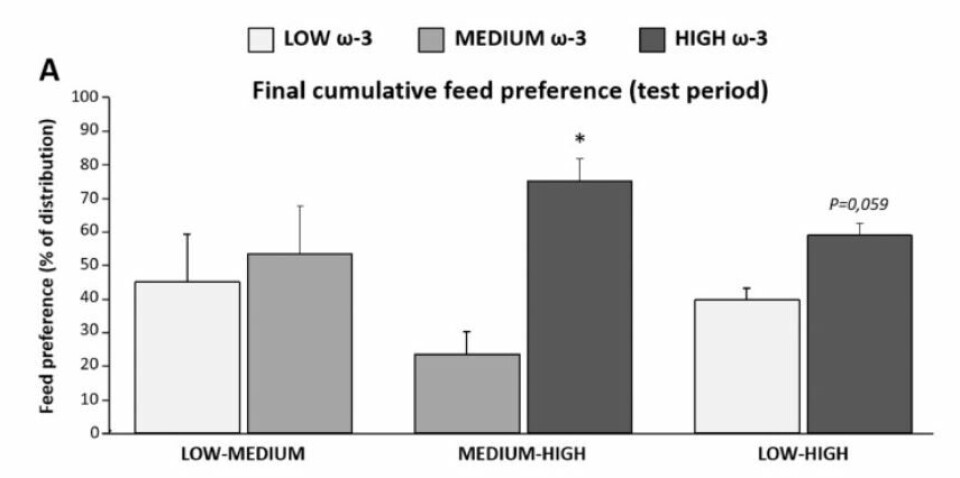
Trout find omega-3-rich feed tastier, study shows
Rainbow trout prefer feeds containing higher levels of omega-3 fatty acids and can discriminate between diets containing different levels of the acids, research in France has shown.
The study by scientists at the French National Institute for Agricultural Research (INRA) was carried out in the knowledge that the effect of replacing traditional aqua-feed ingredients (fishmeal and fish oil) by a 100% plant-based diet drastically decreases fish performance (survival and growth).
The researchers were working on the hypothesis that feed with low or zero levels of the omega-3 fatty acids EPA and DHA was less attractive for fish. The fish therefore ate less of it and consequently fared less well.
Three diets
The study, published in the journal Physiology & Behavior, examined the feed preference of rainbow trout (Oncorhynchus mykiss) for three diets containing different levels of the omega-3 long chain polyunsaturated fatty acids (ω-3 LCPUFA) EPA and DHA - 0% for low, 5% for medium and 20% for high, total fatty acid content.
Feed preference values for each group (low versus medium ω-3 diets, medium versus high ω-3 diets and low versus high ω-3 diets) were observed using two self-feeders positioned at opposite sides of the tank.
The results showed that rainbow trout could discriminate between the diets containing different levels of ω-3 LCPUFA even if unable to differentiate between levels of 5% (no preference was observed in low v. medium ω-3 diets).
High ω-3
Overall, they had a preference for feed high in ω-3 LCPUFA: a 59.5% preference for high ω-3 diet in high v. low ω-3 diets, and 75.6% preference for high ω-3 diet in medium v. high ω-3 diets respectively.
This preference was repeated after 21 days and for a further 21 days when the feeds were exchanged between the two self- feeders in each tank: a 63.3% preference for high ω-3 diet in high v. low ω-3 diets, and 69,5% preference for high ω-3 diet in medium v. high ω-3 diets respectively.
The tests also indicated a difference in the extent of food waste of each of the three diets revealed by uneaten pellets after feed demands. During two periods of test, high ω-3 diet was the most appreciated, the least wasted and the most eaten (all choice groups) whereas the most uneaten feed remained the least appreciated diet in three choices diets (low ω-3 diet in low v. medium ω-3 diets, medium in medium v. high ω-3 diets and low in low v. high ω-3).
In conclusion, this study highlighted the influence of ω-3 LCPUFA in the feeding behaviour of juvenile rainbow trout, levels of ω-3 LCPUFA being shown to drive dietary choices in the fish.
Read the full study, Rainbow trout prefer diets rich in omega-3 long chain polyunsaturated fatty acids DHA and EPA, here.























































